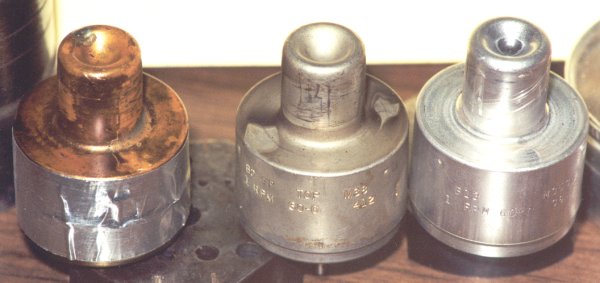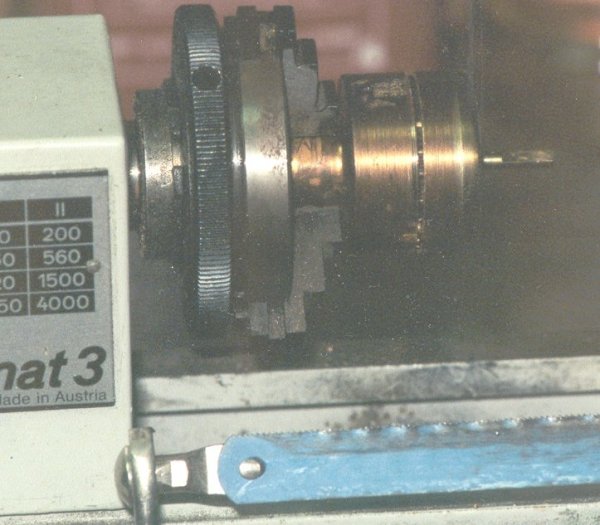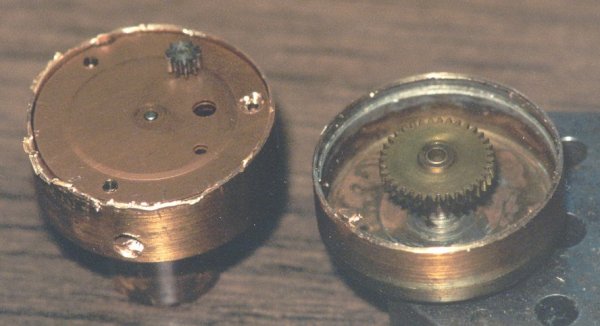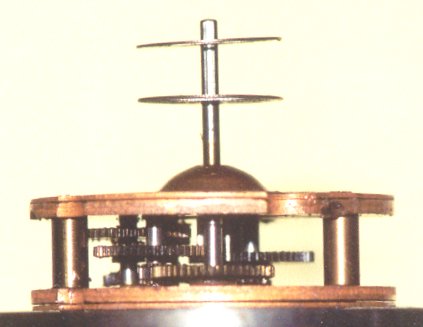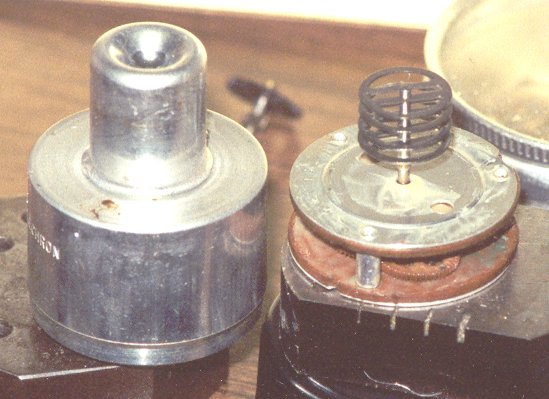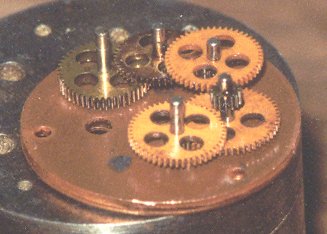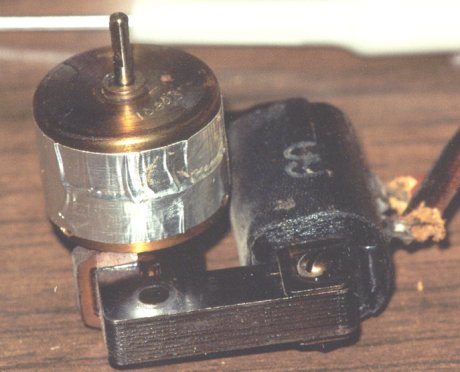The Revere Telechron Electric Clock Motor
|
The exceptionally durable Revere Telechron electric clock is one of several American-made electric chiming clocks, but it differs from the others because of the elegant simplicity of its design and the fact that replacement motors are still available for it. The new motors are not as well made as the old ones, however. As expensive as the new motors have become, you might be curious to know if the motors could be repaired. I was curious to know because the new motors do not appear to last as long. Figure one shows the "B" type motors. The earliest motors have the bronze colour (left). Later motors have the grey colour (middle). The newest motors have an aluminium exterior (right).
Fig. 1
I cut a groove in the middle of the motor using a saw, as shown in Figure two, cutting lightly and just enough to be able to pry it apart with a screwdriver.
Fig. 2
The mechanism is held in place inside the housing with four punch marks, visible from the exterior. Use a drill to remove the punch marks, removing just enough metal and without allowing the drill bit to enter inside the housing. Use a drill to remove the top of each rivet, removing only just enough metal to make it possible to pry to the plates apart. I drilled one of the rivets in Figure three for the photo, but the drilling should be done after removing the mechanism from the housing.
Fig. 3
This particular motor has two rings on the centershaft (the rotor), which is appropriate for clocks without chimes. Clocks with chimes should have four rings, so I added two more rings to the rotor. Notice the bronze plates in Figure four. I have not seen harder bronze anywhere else.
Fig. 4
The new style motor in Figure five does not have bronze plates, but rather a synthetic material. This material probably offers a lower coefficient of friction, but it is not as hard as the bronze. Note that the new motor has four rings. It also has grease instead of the oil used in the older motors (lubrication takes place by capillary action).
Fig. 5
The bushings in the bronze plates of this particular old motor showed no visible signs of wear, but several of the gears in the train had very badly worn teeth, so I replaced the gear train with gears from another motor (like the motor in the middle of Figure one). The low-torque gears in Figure six were made of a synthetic material, maybe an early form of plastic, commonly used in electric clocks to reduce noise.
Fig. 6
I disassembled a new style motor to investigate why it was making excessive noise after only four years. There was no visible wear in the gear train, but the rotor's pinion was rubbing against the lower plate. While this appears to be less of a problem with bronze plates, the synthetic material was wearing. To prevent this, I inserted a small piece of brass (a Bergeon bushing, actually: see Figure seven) in the hole of the driver gear, with a small amount of grease to prevent it from falling out during assembly. The excessive noise stopped.
Fig. 7
I lubricated the bushings with a graphite grease for higher torque gears and oil with graphite for lower torque gears, assembled the mechanism, cleaned and lubricated the shaft of the driver gear with graphite grease, and sealed the unit with a metallic tape (any heat-resistant tape will do). Then I tested the motor (see Figure eight).
Fig. 8
Two older motors (like the one in the middle of Figure one) did not show significant wear in the bronze plates nor in the gear teeth. Two of the higher torque gears were, however, out of alignment. This does not appear to have been caused by wear, but rather by a factory defect. To correct this problem requires considerable effort because of the hardness of the bronze. Other motors showed similar misalignment caused by wear of some bushings in the bronze plates, requiring similar repairs.
Go to Western Union Clock Clock Repair Main Page Escapements in Motion Links Page Tributes Page |
